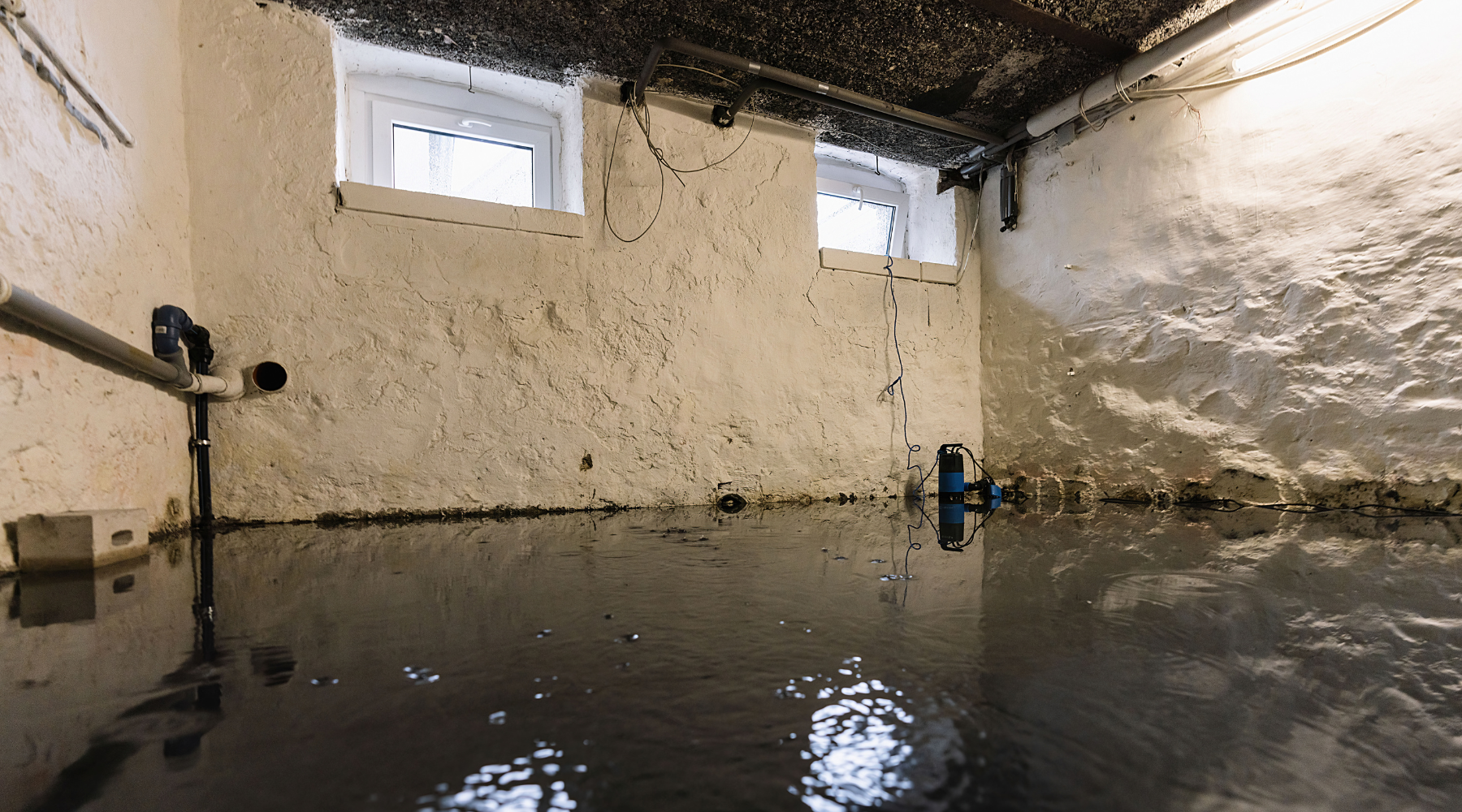
By 911 Water Damage Blog / in 10 Drying Techniques That'll Dry And Save Your Home, drying tips /
10 Drying Techniques That’ll Dry And Save Your Home
By: 911 Water Damage Experts
Water damage poses a significant threat to the integrity and safety of homes, but with the right drying techniques, homeowners can mitigate the damage and preserve their cherished abodes.
In this guide, we’ll delve into the top 10 drying techniques that save homes, explore the importance of drying for homeowners, provide solutions for dealing with flooded houses, and address the most frequently asked questions about drying homes after a flood.
Let’s get right into it!
Top 10 Drying Techniques That Save Homes
1. Use Industrial Fans
Industrial fans promote air circulation and accelerate evaporation, aiding in the drying of water-damaged surfaces and materials throughout the home.
2. Dehumidification
Dehumidifiers extract excess moisture from the air, reducing humidity levels and preventing the proliferation of mould and mildew.
3. Air Conditioning
Running the air conditioning system helps remove moisture from the air and aids in drying out the interior spaces of the home.
4. Open Windows and Doors
Opening windows and doors facilitates cross-ventilation, allowing fresh air to circulate and expel moisture from the home.
5. Absorbent Materials
Utilizing absorbent materials such as towels, sponges, and cloths helps soak up excess water from surfaces and furnishings.
6. Vacuum Extraction
Wet/dry vacuums are effective for extracting water from carpets, upholstery, and flooring, preventing further saturation and damage.
7. Utilization of Desiccants
Desiccants such as silica gel or calcium chloride absorb moisture from the air and can be strategically placed around the home to aid in drying.
8. Professional Water Extraction
Professional water extraction services use specialized equipment to remove standing water quickly and efficiently, minimizing the risk of structural damage and mold growth.
9. Heat Drying
Applying heat, either through specialized drying equipment or natural sunlight, accelerates the evaporation of moisture from surfaces and materials.
10. Structural Drying
Targeted drying techniques focus on drying the structural components of the home, such as walls, ceilings, and insulation, to prevent long-term damage and mold growth.
Top 10 Reasons Why Homeowners Dry Their Homes
1. Prevention of Mould and Mildew Growth
Excess moisture creates an ideal environment for mould and mildew to thrive, posing health risks and compromising indoor air quality.
2. Preservation of Structural Integrity
Prolonged exposure to moisture can weaken structural components such as wood, drywall, and insulation, leading to decay, warping, and structural instability.
3. Protection of Personal Belongings
Water damage can cause irreparable harm to furniture, electronics, documents, and sentimental items, emphasizing the importance of prompt drying to salvage belongings.
4. Mitigation of Health Risks
Damp environments foster the growth of bacteria and allergens, exacerbating respiratory issues and allergic reactions among occupants.
5. Prevention of Electrical Hazards
Water intrusion into electrical systems poses a significant risk of electrical fires and electrocution, highlighting the need for thorough drying to eliminate moisture.
6. Preservation of Property Value
Prompt and effective drying minimizes the extent of damage to the home, preserving its aesthetic appeal and resale value.
7. Prevention of Secondary Damage
Secondary damage, such as rust, corrosion, and rot, can occur if moisture is not properly removed, leading to additional repair costs and inconvenience.
8. Elimination of Odours
Damp and musty odors resulting from water damage can permeate the home, creating an unpleasant living environment that can persist even after the visible signs of water damage are addressed.
9. Compliance with Insurance Requirements
Many insurance policies require homeowners to take prompt action to mitigate water damage and prevent further loss, emphasizing the importance of drying techniques.
10. Peace of Mind
Knowing that their home has been thoroughly dried and restored gives homeowners peace of mind, allowing them to focus on rebuilding and moving forward after a water-related disaster.
Solutions For Dealing With Flooded Houses
1. Ensure Safety
Prioritize safety by turning off electricity and gas mains, wearing protective gear, and avoiding contact with contaminated water.
2. Remove Standing Water
Use pumps, wet/dry vacuums, or professional water extraction services to remove standing water from the home promptly.
3. Dry Out the Space
Implement a combination of drying techniques, such as industrial fans, dehumidifiers, and ventilation, to dry out the interior spaces of the home thoroughly.
4. Assess and Salvage Belongings
Evaluate the extent of damage to furniture, appliances, and personal belongings, and take steps to salvage items that can be restored through drying and cleaning.
5. Address Structural Damage
Inspect the home for structural damage, including weakened walls, floors, and ceilings, and enlist the help of professionals to repair and reinforce damaged areas.
6. Prevent Mould Growth
Apply antimicrobial treatments to prevent mold and mildew growth, and monitor humidity levels to ensure they remain within acceptable ranges.
7. Document the Damage
Take photographs and videos of the damage for insurance purposes, and keep detailed records of restoration efforts and expenses.
8. Seek Professional Assistance
Consult with water damage restoration professionals for expert advice and assistance in restoring your home to its pre-flood condition.
9. Implement Preventive Measures
Take proactive steps to prevent future flooding, such as installing sump pumps, waterproofing basements, and maintaining gutters and drainage systems.
10. Stay Informed
Stay informed about local flood risks, emergency procedures, and resources available for homeowners affected by flooding, and be prepared to take swift action in the event of future emergencies.
FAQs
1. How long does it take to dry out a flooded home?
The time required to dry out a flooded home depends on various factors, including the extent of the damage, the drying techniques employed, and environmental conditions. In general, it may take several days to several weeks to complete the drying process thoroughly.
2. Can I dry out my home without professional assistance?
While homeowners can implement basic drying techniques, such as using fans and dehumidifiers, professional assistance may be necessary for extensive water damage and structural issues. Water damage restoration professionals have the expertise and equipment to ensure thorough drying and minimize the risk of secondary damage.
3. What should I do if my home smells musty after drying?
Musty odors are often indicative of mold or mildew growth, which may require additional remediation efforts. Consult with mold remediation professionals to address the underlying cause of the odor and implement effective solutions for eliminating mold and improving indoor air quality.
4. Is it necessary to remove all furniture and belongings from the home during drying?
In some cases, removing furniture and belongings from the home may be necessary to facilitate drying and prevent further damage. However, salvageable items can be dried and restored through proper cleaning and disinfection procedures.
5. How can I prevent mold growth during the drying process?
To prevent mold growth during the drying process, ensure thorough ventilation and air circulation, maintain relative humidity levels below 60%, and promptly address any sources of moisture or water intrusion. Additionally, consider using antimicrobial treatments to inhibit mold and mildew growth on surfaces.
6. Can I use household fans to dry out my home?
While household fans can help promote air circulation, industrial-grade fans are more effective for drying out large areas and accelerating the evaporation of moisture. Industrial fans are specifically designed for water damage restoration and offer higher airflow rates and greater drying capacity.
7. Should I remove wet carpeting and flooring after a flood?
In many cases, it is advisable to remove wet carpeting and flooring promptly to prevent mold growth and structural damage. Wet carpeting and flooring can trap moisture and harbor mold and bacteria, posing health risks and exacerbating water damage.
8. What should I do if my drywall is water-damaged?
Water-damaged drywall should be inspected for signs of mold growth, warping, or structural compromise. Depending on the extent of the damage, it may be necessary to remove and replace water-damaged drywall to prevent further deterioration and ensure the integrity of the home’s structure.
9. Can I use bleach to clean water-damaged surfaces?
While bleach can be effective for disinfecting surfaces contaminated with mold or bacteria, it may not be suitable for all materials and surfaces. Consult with water damage restoration professionals to determine the appropriate cleaning and disinfection methods for your specific situation.
10. How can I prevent future flooding in my home?
To prevent future flooding, consider implementing preventive measures such as installing sump pumps, improving drainage systems, sealing cracks and openings in the foundation, and elevating utilities and appliances above potential flood levels. Additionally, stay informed about local flood risks and take proactive steps to protect your home and belongings.
If you have any questions about our article, “10 Drying Techniques That’ll Dry And Save Your Home” or need water damage services, feel free to call us at 1-833-WE-DRY-IT or chat with us on social media or LiveChat!
Related Posts
Fire Damage Restoration Articles
The Dos And Don’ts Of Commercial Fire Damage
Forest Fire House Damage: What To Do After Your House Is Damaged By A Forest Fire And Who to Call?
Fire prevention tips for the summer
How to clean up after a house fire
Fire damage restoration checklist
Fire damage tips: 6 hazards property owners miss
How smoke from fires can negatively affect your health
What are the most common causes of house fires?
10 helpful smoke damage cleaning tips
Mould Removal Restoration Articles
Is Bathroom Mould Dangerous? Powerful Mould Prevention Tips Inside
Dangers Of Bathroom Mould And Tips On How To Clean And Prevent It
Got Bathroom Mould? Here Are Some Must-Know Bathroom Mould Cleaning Tips
5 Signs You Have Mould Growing In Your Walls
“Can I Remove Mould Myself?” Our Mould Removal Experts Have Answers
7 Must-Know Reasons Why You Should Get A Mould Inspection Before Buying A House
Does Mould Attract Bugs? Yes And Here’s What Kind And Why
How To Remove Mould From The Attic [Mould Prevention Tips Inside]
How Rain Causes Mould Growth-Prevention Tips Included
Must-Know Tips: How To Remove Mould In Your Basement
Water Damage Restoration Articles
How to prevent home storm damage
What you can expect from a fire damage restoration company
Water damage prevention tips from the most common problems we’ve seen
Top causes of water damage in commercial buildings and how to find them
Must-know water damage tips: What to do after your house floods
What does good water damage restoration look like?
DIY water damage restoration and the hidden dangers
How to choose the right water damage company
Flast floods: What to do before, during and after a flash flood
What to do when your attic leaks?
This is why water damage is a silent home killer
Related Water Damage Services
Fire damage restoration services
Water damage restoration services
Emergency cleanup services
Mould removal services
Weather damage services


